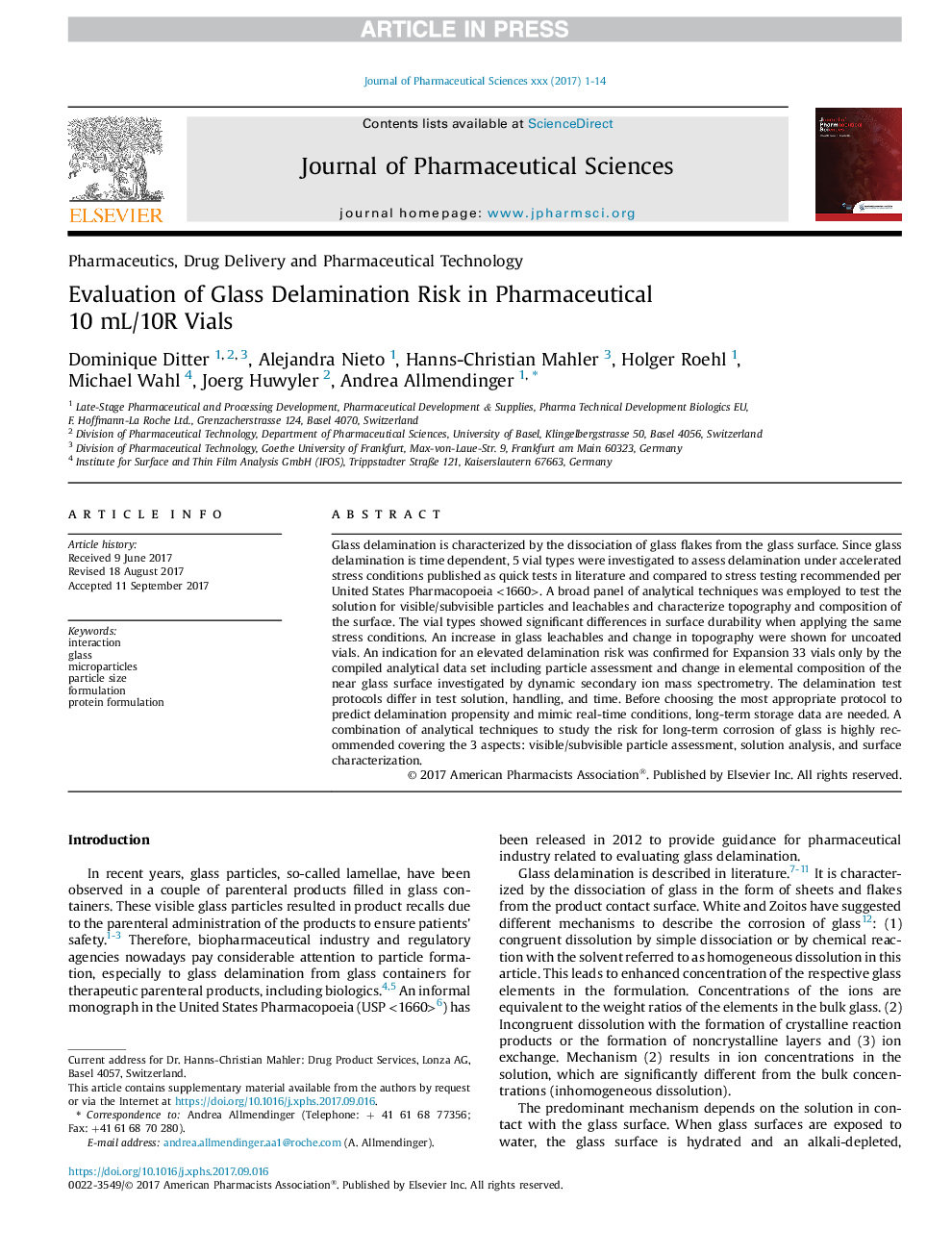| Article ID | Journal | Published Year | Pages | File Type |
|---|---|---|---|---|
| 8513466 | Journal of Pharmaceutical Sciences | 2018 | 14 Pages |
Abstract
Glass delamination is characterized by the dissociation of glass flakes from the glass surface. Since glass delamination is time dependent, 5 vial types were investigated to assess delamination under accelerated stress conditions published as quick tests in literature and compared to stress testing recommended per United States Pharmacopoeia <1660>. A broad panel of analytical techniques was employed to test the solution for visible/subvisible particles and leachables and characterize topography and composition of the surface. The vial types showed significant differences in surface durability when applying the same stress conditions. An increase in glass leachables and change in topography were shown for uncoated vials. An indication for an elevated delamination risk was confirmed for Expansion 33 vials only by the compiled analytical data set including particle assessment and change in elemental composition of the near glass surface investigated by dynamic secondary ion mass spectrometry. The delamination test protocols differ in test solution, handling, and time. Before choosing the most appropriate protocol to predict delamination propensity and mimic real-time conditions, long-term storage data are needed. A combination of analytical techniques to study the risk for long-term corrosion of glass is highly recommended covering the 3 aspects: visible/subvisible particle assessment, solution analysis, and surface characterization.
Related Topics
Health Sciences
Pharmacology, Toxicology and Pharmaceutical Science
Drug Discovery
Authors
Dominique Ditter, Alejandra Nieto, Hanns-Christian Mahler, Holger Roehl, Michael Wahl, Joerg Huwyler, Andrea Allmendinger,
